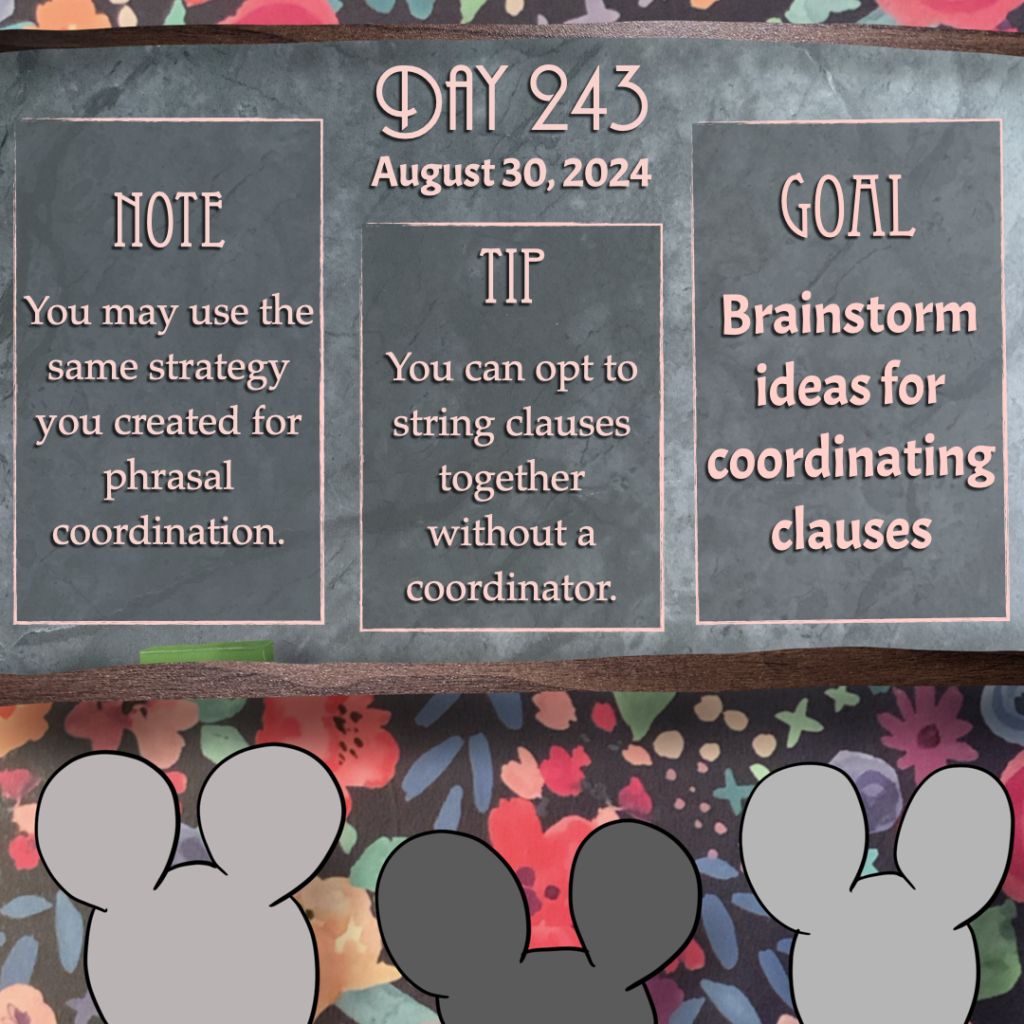
Goal: Brainstorm ideas for coordinating clauses
Note: You may use the same strategy you created for phrasal coordination.
Tip: You can opt to string clauses together without a coordinator.
Work focus: Learn/Brainstorm/Try
Today’s goal is to brainstorm ideas for coordinating clauses. You might want to use the same strategy (or strategies) that you created for coordinating phrases. For instance, if you created coordinating conjunctions for joining noun phrases, you could use those same conjunctions to join clauses. However, you may want to explore options unique to clauses in your language. That is, you could use a different set of strategies for joining clauses. For instance, you may require a conjunction such as “and” when joining noun phrases but choose to string clauses together with no overt conjunction to indicate a generic “and” relationship.
As a reminder, the most common coordinating conjunctions in languages express clausal relationships such as simultaneous events (X and Y occurred at the same time), sequential events (X occurred then Y occurred), exclusive options to consider (either X or Y occurred, and only one can be true), inclusive options to consider (X or Y occurred—at least one occurred, though perhaps both did), and contrastive information (X occurred but Y is surprising information).
Take some time to explore what you might do to join clauses in your language and make note of anything you need to create for your language to make those strategies happen.
